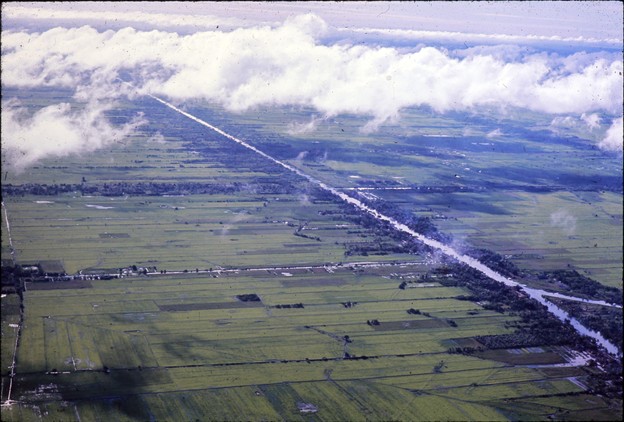|
David Mitchell
I am prormpted to add another short story that will be a chapter in my book. But it is not finished and I don't have all the details yet. I am adding it at this time because I just had a visit with the guy in the story and his wife. They were en route from their home in Rhode Island, to their windter house in Florida and stopped by for a night so we could visti. I showed them around our quaint little downtown and we had a nice dinner together. Bill and I were reminiscing about one of his most memorable experiences.
----------------------
Sometime in the Spring of 1969, First Lietenant Bill and his Observer were working their search somewhere south of Can Tho ("can toe") and got into a big mess. A large unit of our friendly ARVN troops were caught in a nasty fire fight with a large group of NVA (North Vietnames Army) troops.
I should explain that an encounter with NVA troops was less common, but much more intense because the NVA only travled in larger units. Our encounters with VC could be as few as two or three guys - six or eight was a large group. I once encountered about 18, but that was rare. But the NVA usually always traveled in at least a platoon size (40 to 50 guys ), or a "Companyy" size (160 to 200 guys). (and they almost never moved in the open during daylight, so we rarely ever found them) Another critical difference was that those units usully carried a .50 Caliber machine gun (along with that many more AK-47s). The .50 cal machine gun created another level of risk because that weapon could penetrate what little armor we carried on board - either our back and underseat armor plates or our 'chicken plates', worn on our upper body.
And meanwhile the friendly ARVN troops on the ground had already suffered about 20 wounded. A pair of phantom F-4s had already strafed the position (a very scary sight when they drop naplam), likely invflicting heavy casualties on those NVA trroops. But under so much fire, our Med Evacs could not get in that close to get them.
Bill flew into the middle of this mess before he realized where everyone on the ground was. He and his observer (Clark - a super nice kid who was considered our best "Observer") were shot down and they bounced hard on the ground and rolled onto their side.
Here is where it gets interesting. In every case that I can recall, when one of us "Scouts" got knocked down, the C&C (Command & Control) Huey that was running the mission from 500 feet, would come down (even under fire) and pick up the Loach pilot and observer, and lift them out of danger. That usualy took no more than a few minutes. Later, when my turn came, we were picked up in less than two minutes.
But this time was different. Bill had gone down in a space that was actually almost in the middle of the two opposite forces on the ground. And so intense was the live fire on the ground that our C&C ship could not get in to pick them up. So, unlike any other shoot down, Lt. Bill and Sergeant Clark had to low crawl out of that position for 20 to 30 minutes before they could be picked up by the C&C. It was a pretty scary 20 or 30 minutes for the two of them
Our C&C that day was Major Liens, and while he could not pick them up, the group commander of all Delta Corps (southern most quarter of all Vietnam) Army helicopter units - a full Colonel simply observing the mission that day) - was finally able to get down and pick them up.
He flew them back to Can Tho airfield (a large Army Aviation base) and served them sandwiches and ice tea in his own office.
While there, our platoon leader (a Captain that we disliked and disrespected, and didn't last long before he quit the Scout platoon) ordered Bill to get another ship and go back into the area of the fire fight. Bill did so reluctantly but steered well clear of the "hot" zone.
And to add insult to injury, Bill was telling me, the Huey that was sent to "sling" (lift) the downed Loach out was itself shot down later and had to be rescued.
Typical "Delta" terrain - thousands of canals (big and small - dug by hand hundreds of years ago) - and rice paddys everywhere.
The "Delta" was flat as a pancake and there were no roads back then (there are major highways now). That one large canal in the photo was one of several major routes of transport in the Delta. The large ones running north and south usually fed up into the Mekong River. The photo does not show a very good example of the smaller canals, which were everywhere.
It's hard to fathom the labor it took to dig those by hand and make them straight as a die for hundreds of miles - and some as old as a thousand years ago. 
|